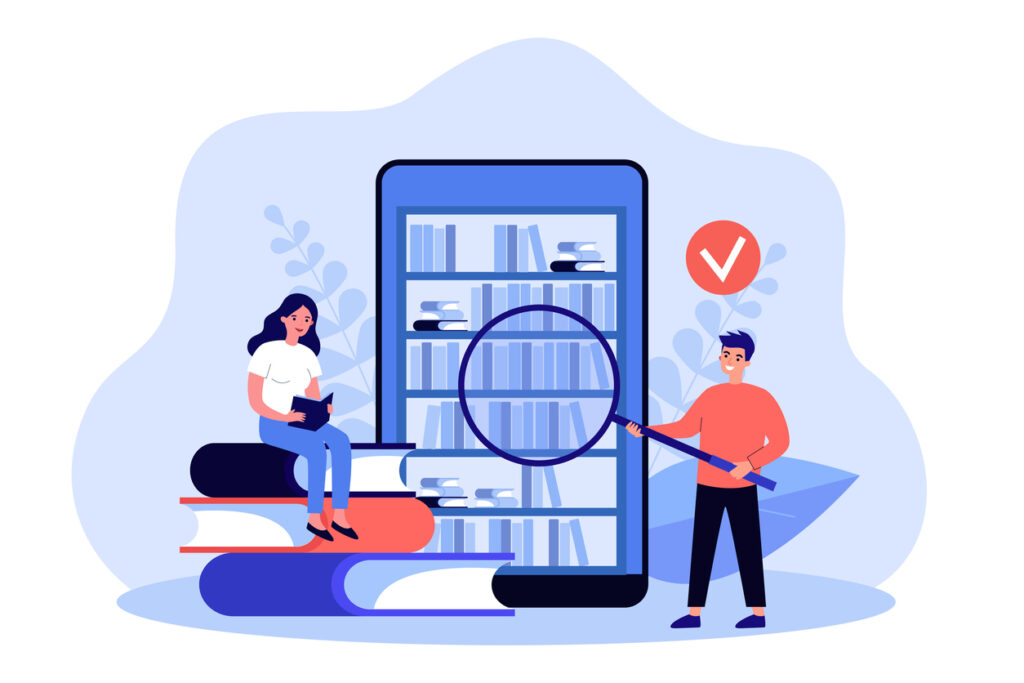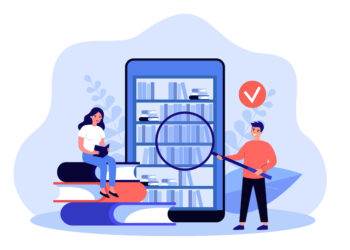As library discovery services mature and evolve, now entering two decades in development, libraries, service providers, and publishers continue their collaborative efforts to offer localized equivalents to mainstream search engines. Initiated in 2011, NISO’s Open Discovery Initiative (ODI) offers standard terms of engagement for the creation and implementation of pre-indexed discovery tools for all stakeholders. The ODI protocols aim to establish greater transparency across the supply chain by providing a framework for libraries, publishers, and service providers to issue standardized “conformance statements.”
As a long-time champion of the ODI standards, I’ve been keeping an eye on how our community is responding to this framework for improved cross-sector collaboration. Now that ODI statements are being released by all major content providers, I caught up with some of our industry’s leading discoverability and usage experts to see how things were going for publishers.

This post is the result of my recent conversations with five exemplars of ODI conformance:
- Alvin Walker, Director of Research Products, American Psychological Association (APA)
- Magaly Bascones, Discovery and Usage Manager, Gale
- Julia Mielish, Discovery Manager/Sales Operations, Oxford University Press (OUP)
- Bobbi Patham, Manager of Discovery & Discovery Services, Springer Nature
- Matthew Ragucci, Director of B2B Product Marketing, Wiley
What is the value of an ODI statement to your organization?
For Alvin Walker at the APA, their conformance statement is an act of supporting NISO in general and the ODI specifically, which signals the organization’s commitment to shared industry standards. “Participating in these services sends the message to our library customers that APA takes seriously our commitment to open discovery,” Walker reflected.
Magaly Bascones at Gale identified three distinct motivations for publishing their ODI checklist:
- “It allows us to understand how our discovery provision fits the expectations of libraries and system vendors.
- “It allows customers to know more about our commitment to discovery.
- “It is a common ground document with system vendors and partners to progress and find areas of improvement for further discovery integration.”
For OUP, upholding NISO ODI guidelines and standard metadata practices is aligned with their overall commitment to digital publishing and ensuring the broadest reach and discoverability possible. Julia Mielish sees their ODI statement serving as a “win-win” effort that benefits all providers across the supply chain. “For our discovery service partners, it enables them to seamlessly upload our academic content to their platforms,” Mielish reflected. “Consequently, this supports our mutual library partners in ensuring that all users have access to that content.”
Bobbi Patham of Springer Nature agrees with this sentiment, noting that their ODI conformance serves as “reassurance to library clients that we really are providing all the metadata and content needed for third-party discovery services to provide an excellent service pointing to our content.” She also noted that participation in shared information standards ensured that any search and indexing service has the same chance to provide great content discovery experiences.
For Matthew Ragucci at Wiley, their ODI statement demonstrates their investment in discovery, which he notes is a collaborative effort across libraries and their service and content providers. “This demonstration of shared values is itself valuable from a business perspective; it shows that we not only understand the importance of discovery but are dedicated to supporting customers and partners in their work,” Ragucci noted.
Any surprises or challenges?
The publishers I spoke with found that compiling and releasing ODI conformance statements was fairly easy and straightforward — and produced some unexpected results. In particular, many providers appreciated the spotlight placed on the often-invisible work required to publish high-quality metadata. Many found that the process unearthed valuable cross-functional lessons about institutional discovery both within their organizations and with their customers and partners.
“This process helped me join the dots of how metadata workflows and discovery within Wiley,” said Ragucci. “Different teams have been doing this work for a long time, and getting the answers for the conformance statement, helped me and other colleagues understand a more complete picture of content discovery and the impact of this work.”
At Springer Nature, Patham also reflected that the process “fostered numerous internal connections, and we became a stronger and more confident team based on the fact-finding necessary to publish a complete statement covering our data exchanges.” As a member of the ODI committee, Patham enjoys this collaborative work with librarians, publishers, and discovery vendors, which she said “underscores our dedication to advancing discovery within the library ecosystem.”
For Basones at Gale, the compliance process underscored those critical supply-chain collaborations. “Discovery integration is a never-ending task” and, with so many players involved, they learned that “even the smallest action could have an impact on discovery.” While working through the ODI documentation and statement, “it became clear that for Gale’s varied portfolio of products, we cannot have a solo approach to discovery.”
The ODI framework enables collaborative support for the ongoing improvements necessary to ensure optimal institutional discoverability. As Walker noted, “the metadata that [the APA] shares with various open discovery services is not static; it requires release of frequent updates with data corrections. Clean and accurate data has always been our goal and we realize how essential it is to ensure timely access to our scholarly content.”
What are the impacts and benefits?
Opening up the behind-the-scenes work necessary to enable content discovery is a key goal of the ODI framework and this resonated with the participating content providers. “Increased transparency across the industry is critical if we are to recognize and mitigate the potential shared challenges regarding standardizing metadata,” Mielish at OUP noted.
In simplest terms, ensuring broad discoverability within academic and research institutions is a cost of doing business in this sector today. As Walker noted, “APA’s relationship with the discovery services promotes access to APA’s full-text content and drives usage for our research databases, particularly our full-text products, APA PsycArticles and APA PsycBooks.”
The ODI framework is now an expected market and client communication tool. Patham noted the value of their checklist, which ensures that customers are “aware of [Springer Nature’s] dedicated efforts to deliver quality metadata to discovery services, to provide the best possible chance that their users will connect with quality peer-reviewed content that is the most relevant to their information need.”
Ragucci agrees, noting that “everyone in the information ecosystem, be they content providers, libraries, vendors or researchers stand to benefit from robust discovery practices… and the conformance statement is a clear notice that we understand and share the same values as our library partners when it comes to discovery and standardize practices.”
“Discovery is a top priority for Gale,” Bascones reflect. “We are committed to ensuring end users have a flawless discovery journey when using their discovery service. Working through the ODI documentation and statement makes clear that working in discovery is a mindset.”
Can you share any tips for other publishers?
Most providers indicated that the ODI checklist is a simple set of yes/no questions and should not be a difficult undertaking. “With the right individual managing data exchange, the process can be swiftly accomplished with minimal time investment,” Patham noted. “If you are going to the trouble of providing data out to the world to help discovery services and A&I services point users to your content, it pays to let the clients know you are doing that for them.”
Mielish encouraged other providers to complete ODI statements and take the time to audit metadata for compliance with industry standards. She also noted increasing demand from the market for transparency in scholarly communications. “Information sharing is increasingly more important for researchers and students alike,” she said. “As such, that increased the need for all of us to disseminate our content to users in a standard way.”
Walker agreed, noting that the APA found it important to get buy-in and commitment at all levels of the organization, to ensure alignment with strategic goals. “Part of the process includes engagement of all departments (e.g., Product, Content, Sales, Marketing, and IT),” he said, “as the work required to make your content transparent, visible, accessible, and open is an ongoing, collaborative process.”
Ragucci notes that the ODI statement is just the beginning and can facilitate improved teamwork within an organization and beyond. “I’d recommend utilizing the relationships you may have formed while completing the conformance statement,” he said, “to have discovery check-ins and talk about ways you might be able to improve discovery practices at your organization.” He also recommends further reading: “There was a great article from 2016 by Julie Zhu describing in detail, recommendations for publishers.”
Offering both strategic and practical considerations, Bascones draws on her experiences at Gale for other providers as they compile an ODI conformance statement:
- “Identifying the internal workflows and metadata ‘source of truth’ is essential.”
- “Communicate internally. Making sure everyone is informed and understands how they contribute to discovery.”
- “As mentioned before, discovery is a mindset. A clear vision, strategy, and objectives will help to achieve this.”
- “As content providers, we should do our best to make our discovery provision as accurate as we can, but we definitely need system vendors and libraries to work with us as a team to understand how our metadata is used and whether it meets the end users’ expectations. So, keeping the conversation going is a must.”
I couldn’t have said it any better! Please add your comments and reflections in the comments below to contribute to this industry-wide initiative.
Discussion
2 Thoughts on "Web-scale Institutional Search: What are Publishers Doing Today?"
It’s interesting to me that content providers have seen advantages in their own organizations very similar to those that libraries have recognized. Completing a conformance statement helps document and describe internal processes within organizations. That was certainly the case for me at my institution, and an unexpected benefit to completing our conformance statement. I ended up with a better understanding of the workings of my own operation and uncovered a few areas where internal communication and roles could be better defined.
Note: I am a member of the NISO ODI Standing Committee and co-chair since July 2023.



